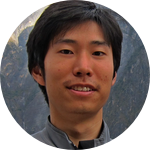About This Project
Chemical insecticides used in agriculture impose negative impacts on ecosystems and public health. My research aims to reduce reliance on chemical insecticides by clarifying the mechanisms that underlie conservation biological control (CBC). In theory, CBC increases natural pest control by providing resources for natural enemies of pests on and near farms. I will study the effect of different types of non-crop vegetation on a major pest, the Lygus bug, and its predators and parasites.
Ask the Scientists
Join The DiscussionWhat is the context of this research?
Conversion of natural areas for agriculture is a major driver of biodiversity loss. The tension between agriculture and conservation will become more acute as crop demand increases. California’s Central Coast is not only one of the world’s most productive agricultural regions, it is also a pesticide hotspot. Correlations between pesticide exposure and negative health impacts have been extensively documented in this area. Collateral damage to non-pest species is also a concern. How can agriculture be balanced with conserving biodiversity and protecting human health? The adoption of diversified farming is a promising solution. By promoting practices that simultaneously maintain high yields and support biodiversity, win-win solutions for humanity and natural ecosystems may be achieved.
What is the significance of this project?
Studies have shown that natural enemies of agricultural pests become more abundant in crops when non-crop vegetation such as forests or grasslands are nearby. However, the effect of landscape composition on pest abundance, levels of pest control, and levels of pest damage remain obscure. These relationships are complicated by fluctuating pest and enemy populations as well as pests benefiting from non-crop resources. I'll be studying the movement of pests and their natural enemies between patches of different vegetation types, throughout a growing season. The results will help scientists and farmers design more specific and effective management techniques for conservation biological control. The results may also be used to quantify the benefits provided to farmers by natural habitats.
What are the goals of the project?
The proposed research will take place on organic strawberry fields in California’s Central Coast. The study will focus on Lygus hesperus (the Lygus bug), a major strawberry pest, and its suite of natural enemies. A total of 20 sites, with varying proportions of broadleaf weeds and forested areas adjacent to strawberry fields, will be sampled from May-August 2016. Each site will be sampled three times across the growing season.
At each site, I will use a variety of methods (described in the Budget section) to collect pests and natural enemies, estimate predation rates, and estimate levels of pest damage.
Budget
I will use this funding to purchase supplies for collecting field data this summer. The bi-directional malaise traps and drift fences with pitfall traps will be used to collect Lygus bugs and their natural enemies moving between crop and non-crop vegetation patches. The bi-directional set-up will provide data on the direction in which specimens were moving, either from non-crop vegetation into strawberry crops, or vice versa.
The beet armyworm eggs will be used for a sentinel experiment in which the eggs are presented as proxy bait for predators. By comparing the number of eggs before and after they are deployed in the field for 24 hours, we can estimate predation levels at varying distances from non-crop vegetation.
The Stihl leaf blower will be used as an arthropod vacuum to collect pest and natural enemy specimens from crop and non-crop vegetation.
Endorsed by
Meet the Team
Adrian Lu
Before embarking on my current trajectory, I was an intellectual property lawyer in Silicon Valley. After several years, disillusionment with corporate legal practice motivated me to engineer a career shift. I moved to China, where I first worked with NRDC's Beijing office and then collaborated with several grassroots environmental organizations.
For nearly two years, I volunteered at a Peking University field biology research station led by Pan Wenshi in the subtropical province of Guangxi, where I studied and advocated for the protection of two critically endangered species - the Chinese white dolphin and the white-headed langur.
In Guangxi, I realized that basing conservation efforts solely on nature's intrinsic value often comes up short. In most countries, economic development is a policy priority, and conservation advocates must speak in terms of quantifiable benefits to humanity if they wish to be heard. Thus, I became interested in ecosystem services and began to study the intersection of local livelihoods, sustainable agriculture, and wilderness conservation.
In fall of 2013, I enrolled in the Ph.D. program of UC-Berkeley's Environmental Science, Policy and Management department. I am now studying interactions among natural vegetation, strawberry crops, and strawberry pests and their natural enemies in California’s Central Coast.
Project Backers
- 88Backers
- 121%Funded
- $5,105Total Donations
- $52.33Average Donation

